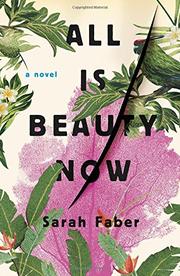Here in Berlin Cristina García (2017)
The cover of Here in Berlin tells us that this is “a novel,” but upon opening it you’ll be excused if you mistake it for a collection of short stories. Either way, Cristina García has produced a striking picture of contemporary Berlin by presenting pieces of historical Berlin.
The construct is this: a Visitor, never named, interviews Berliners, many of them aged residents of a nursing home, and records their stories in their own words. The Visitor also sets down a few third-person accounts of Berliners. In addition, the Visitor records some interviews with Cubans, both in Berlin and in Cuba, as she explores the connections between East Germany and Fidel Castro’s Cuba as those connections existed from the end of World War II until 1989, when the Berlin Wall came down. It had never occurred to me before, but now it’s obvious that there would have been movement of people between these two centers of Communist power in the twentieth century. Students would have traveled from Cuba to study in Berlin, for instance, and transatlantic business would have been conducted.
How did the (fictional) Visitor secure her (fictional) interviews? “The Visitor struggled with balancing what she found with what eluded her. On fortuitous days, stories dropped like gifts out of the windless skies, typically prompted by loneliness, or happenstance. Other stories—the forgotten, interstitial ones she’d come to Berlin to collect—she coaxed from the grist of history. Why was apocalypse so compelling? What did war keep offering that ensured its survival?” (109)
Oh, the stories that emerge! The primary revelations concern the Nazi era and the period of the late 1940s, when Berlin was an apocalyptic landscape of destruction and starvation. Nonagenarians reveal to the Visitor long-hidden secrets of their precarious survival, and slightly younger Berliners recount grim childhoods, when World War II was grinding to a horrific conclusion, with Hitler’s troops fighting to the bitter end and the Russians storming Berlin. The voices are so authentic that you may start to think of the book as documentary rather than fictional.
War crimes are prominent in the stories, as ordinary Germans explain how they were sucked into the Nazi machine. Toward the middle of the book, a former Luftwaffe pilot laments, “We grew old, very old, before our time. Sometimes I think it’s better to remember nothing at all. Memories are selective. We pick and choose what we need to believe, what we require to survive.” (122) The specter of collusion in war atrocities hangs over almost all the speakers. An amnesiac photojournalist explains: “Dear Visitor, the ghosts in Berlin aren’t confined to cemeteries. Listen. Don’t you hear their whisperings? Feel their tugs on your sleeves? Their stories lie beneath the stories that nobody want to talk about. They haunt the present like palimpsests, shaping it with their hungers.” (96)
Over it all, the Visitor tries to pinpoint her reasons for conducting the interviews in the first place. She finds linkages between some of the characters, making Berlin sometimes seem like a small town where everyone knows everyone else. For instance, an ophthalmologist whom the Visitor interviews has a couple of the other story tellers as patients. A Cuban who moved to Berlin and became a geology professor reports his long-ago affair with a crippled German ballerina whom the Visitor also interviews. To fully appreciate Here in Berlin, it helps if you can read German, or at least are willing to Google the meanings that you can’t get from context. Sure, most readers will know that “danke” is “thanks,” but I’m guessing that fewer will recognize “Ku’damm” as the shorthand for “Kurfürstendamm,” the broad avenue of shops in Berlin. A few misspellings in the German are unfortunate editing errors. The bits of Spanish that dot the text are less problematic.
The memories of war cannot be erased by time, it seems, or even by the deaths of the participants. In the gleaming new Berlin, a city of lovely lakes and rivers, heinous acts linger: “Most of the city’s new architecture—dazzling, sleek—has sprung up along these riverbanks. Berlin longs to define itself by the future, yet it remains a hostage to its past.” (88)
For a different take on Germany in the years right after World War II, see my review of The Women in the Castle, a novel by Jessica Shattuck. And for another collection of linked short stories, try Anything is Possible by Elizabeth Strout.























